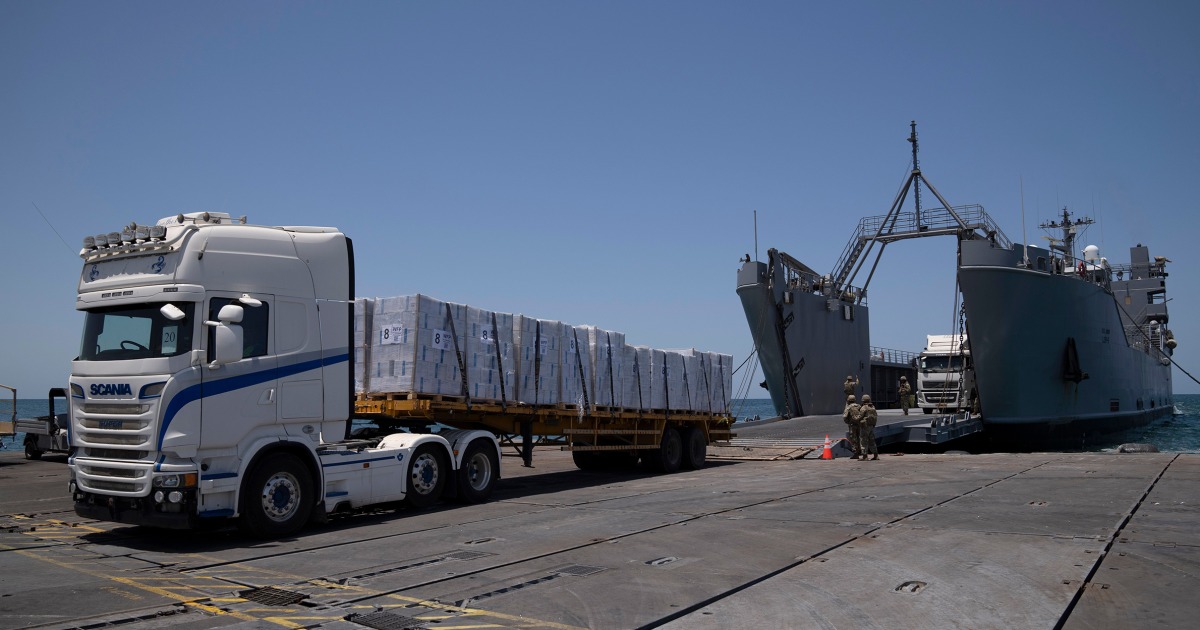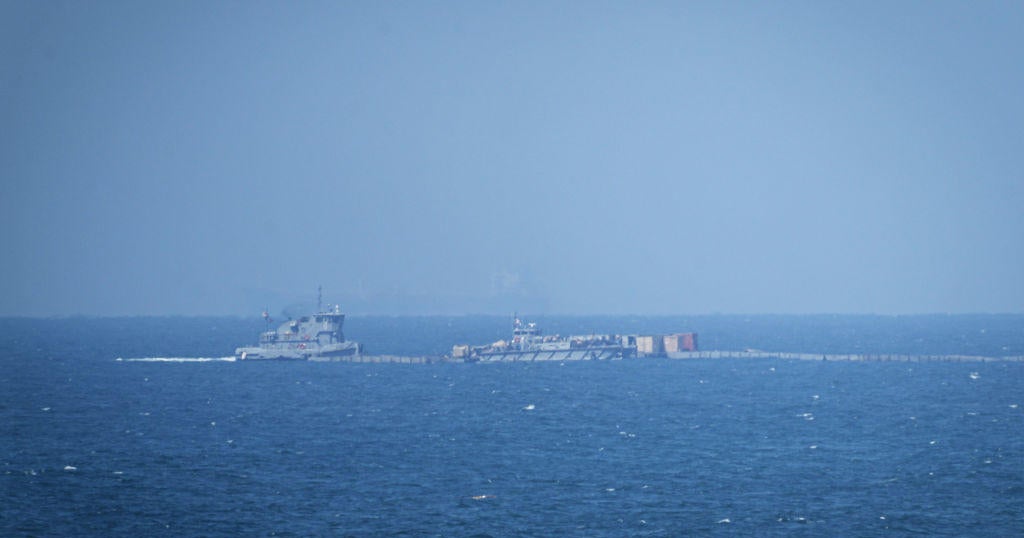
The Pentagon is shutting down its aid operation in Gaza, which was set up to facilitate the delivery of aid to starving Palestinians. The pier system, which cost $230 million and was launched in mid-May, has faced numerous challenges due to bad weather and rough seas. Despite these challenges, the Pentagon believes that it has saved lives by delivering nearly 20 million pounds of aid to the coast of Gaza.
President Joe Biden announced the project in his State of the Union address in March as a makeshift effort to feed the population in Gaza, where Israel's military assault has intermittently shut off crossings that are crucial for supplies of food, fuel and other aid. However, due to technical problems and bad weather, the pier was only operational for about 20 days.
The U.S. Central Command tried to reattach the temporary pier to the beach in Gaza on Wednesday but were unsuccessful due to bad weather and technical problems. The Pentagon acknowledged the project's challenges but said it was far better than doing nothing.
Nearly half a million people in Gaza face catastrophic levels of hunger, and roughly 600 trucks of aid are needed every day to stave off famine-like conditions. The United Nations has warned that the current environment in Gaza is complex and more challenging than anything they have seen.
Despite these challenges, some sources claim that the Biden administration announced the expensive and logistically complicated pier project to avoid having to put meaningful political pressure on the Israeli government to increase aid access.
The U.S. military has not yet announced a final decision regarding the fate of the pier, but commanders in charge of the operation have recommended pulling the plug.

